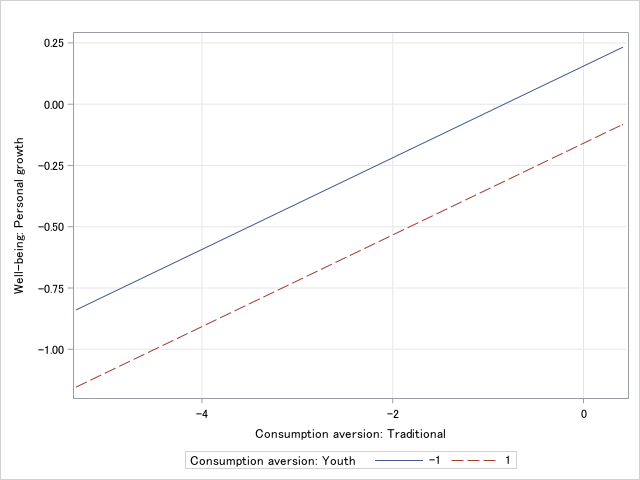By Hiroshima University Department of Public Relations
Researchers elucidated the correlation between “consumption aversion” and well-being.
(Roman Odintsov via Pexels)
Highlights
- University students who do not spend on traditional activities (e.g. pachinko, sumo wrestling, cars, and so on) scored higher on well-being measures.
- Those students who do not spend on activities appealing to the youth (e.g. movies, travel, and so on), however, indicated reduced well-being.
Summary
A Hiroshima University research team composed of Dr. Yoshinori Sugiura and Dr. Tomoko Sugiura elucidated the correlation between “consumption aversion” and well-being. Questionnaire data from 269 students indicated that those who do not spend on traditional activities such as pachinko, sumo wrestling, cars, and so on scored higher on well-being measures. On the other hand, those who do not spend on activities that are appealing to the youth such as movies, travel, and so on indicated reduced well-being.
The study was published in the academic journal Psychological Studies in April 2023.
Background
In Japan, young people have been alleged to be “consumption aversive” since around 2010. Indeed, governmental statistics reported a decline in consumption among Japanese youth from 1984 to 2014 (White Paper on Consumer Affairs 2017). In addition, a research team led by Dr. Atsushi Oshio from Waseda University reported a decline in self-esteem in Japanese youths from 1980 to 2013. This coincidence suggests that consumption-aversive youth are less happy. However, this possibility has not been empirically examined.
This research team investigated the correlation between consumption aversion and well-being. There are multiple theories on consumer behaviors, which lead to rivaling predictions on the correlation of interest.
Hypothesis 1: Consumption aversion enhances well-being
Studies on a thrift or simple life have found that such a lifestyle enhances well-being by repairing or sharing goods and relying on one’s skills rather than spending. The opposing attitude called materialism has been associated with low well-being. Materialistic people are those who try to impress themselves with expensive goods. Consumption aversion seems akin to a thrift or simple life and antithetical to materialism.
Hypothesis 2: Consumption aversion reduces well-being
Curiosity and interest have been found to have a salutary effect on well-being. If reduced consumption reflects diminished curiosity and interest, it may lead to reduced well-being.
Research findings
The research team developed a questionnaire to measure items on which respondents are spending money. The questionnaire was completed by 269 university students (171 women; 98 men). Society-wide co-variation along the time of consumption and well-being may be attributable to other factors, such as low birth rate and increased aging. By comparing those who consume and those who do not among young students, the research team aimed to clarify the link between consumption and well-being.
The questionnaire presented 53 items that the Japanese youth are supposed to be aversed to purchasing. Study participants rated each item on a 7-point scale ranging from 1 (no spending) to 7 (spend generously).
Responses to the 53 items were statistically analyzed for possible subgroups of (non)consumed objects. Factor analysis divided items into traditional activities (e.g. pachinko, golf, and so on) and activities appealing to the youth (e.g. movies, travel, and so on). Two scores were calculated reflecting consumption aversion to traditional and youth items. Their correlations with well-being indicated differential relations to well-being.
1. Students not spending on traditional items indicated higher well-being
This is consistent with Hypothesis 1. While the degree of materialism was also measured, there was no correlation between materialism and consumption aversion to traditional items. Therefore, materialism cannot explain this finding. Rather, enjoying low consumption with DIY or sharing might have led to well-being.
2. Students not spending on items appealing to the youth indicated lower well-being
This is consistent with Hypothesis 2. Students who do not spend on movies and travel may be losing interest in many things. To examine this possibility, the team obtained additional data from 178 students (103 women; 75 men) on their interest in the same items as used in the consumption aversion questionnaire. Comparing the additional data and the main data indicated that both consumption aversion and reduced interest in activities appealing to the youth were correlated with lower well-being to a similar degree. This suggests that young students who do not spend on movies, travel, and so on have lower well-being because of reduced curiosity and interest.
The team also found that young students who do not spend on activities appealing to the youth are not interested in the opinions of the people around them. This underscores the role of reduced curiosity in this result.
Well-being involves not only happy feelings but also a sense of actualizing one’s potential. Consumption aversion was correlated with the latter type of well-being. For example, those who do not spend on traditional items agreed more to well-being items such as “I like having new experiences for fun (personal growth)” and “I have established warm, reliable friendships (positive relations).”
Future directions
The present results indicate that enjoying a thrift life with innovative ideas, DIYs, and sharing may be a good way for enhanced well-being. Spending to fulfill curiosity is also recommended. As the current study does not involve still younger generations, the change over time in the relationship between consumption and well-being awaits another study.
Figure 1. Consumption aversion on traditional items and activities appealing to the youth and well-being.
Higher consumption aversion to traditional activities (rightward horizontally) is associated with higher well-being (vertical axis). Lower consumption aversion in youth matters (filled line) is located above, which means higher well-being compared to the consumption aversives (broken line). (Yoshinori Sugiura/Hiroshima University)
Media Contact
Inquiries on the study
Associate Professor Yoshinori Sugiura
Graduate School of Humanities and Social Sciences
E-mail: ysugiura * hiroshima-u.ac.jp
(Note: Please replace * with @)
Inquiries on the story
Hiroshima University Public Relations Office
TEL: 082-424-3701
E-mail: koho * office.hiroshima-u.ac.jp
(Note: Please replace * with @)


 Home
Home



